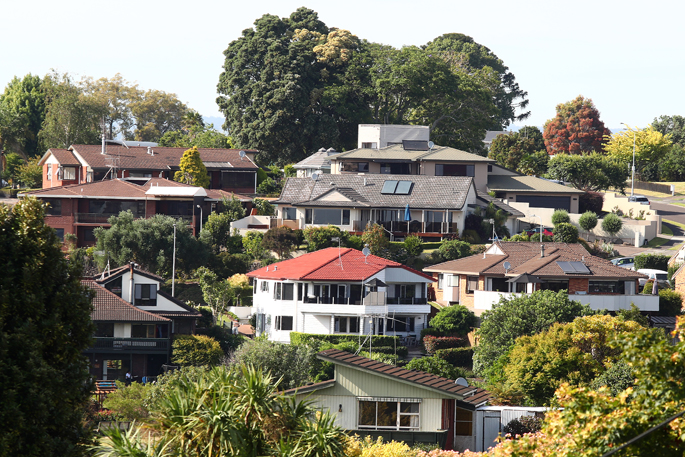After remaining flat in September, CoreLogic’s national House Price Index posted the first rise in property values since March 2022, up 0.4 per cent in October and 0.1 per cent higher over the past three months.
These figures confirm the end of the recent housing market downturn, with a total peak to trough decline of 13.2 per cent (or roughly -$138,000).
However, at just short of $909,000 in October, average values are still almost 25 per cent above the ‘pre-Covid’ levels of March 2020.
CoreLogic NZ chief property economist Kelvin Davidson says around the main centres, signs of the emerging upturn were pretty widespread in October.
Values in Hamilton and Christchurch rose by more than one per cent, Dunedin by 0.8 per cent, and Wellington and Auckland also recorded increases over the month. Tauranga was virtually flat, posting a minor drop of 0.1 per cent.
House Price Index
National and Main Centres
“The key fundamentals for house prices have been looking stronger for a reasonable period of time now. October’s data has brought that first increase at the national level, but it’s early days and there's still a lot of diversity in market conditions across the country.
“Although a new government hasn't been formalised just yet, the shift in voting to the centre-right seems to have bolstered housing market confidence, despite mortgage rates edging higher again recently. We’ve also seen net migration rise to a new record high, which is boosting property demand.
“Another key factor in the housing market turnaround has been the continued strength of the labour market. While this week’s official data for quarter three may show a rise in the unemployment rate, it will be due almost entirely to a larger labour force, not job cuts. The resilience of employment has meant the vast majority of households have successfully managed to rejig their finances as they reprice from older, lower fixed rates, onto today's higher levels.
“The loosening in the CCCFA rules from May and slightly relaxed LVR settings from June have both also played a role, while at the same time, the flow of new listings remains low. As a result, there’s been a re-emergence of some degree of competitive price pressures, as buyers attempt to secure a property in a market where there’s a bit less choice.”
Main Centre Average Value
Auckland
Although the average property value across Auckland rose in October (as it also did in September), the increase was not seen in all sub-markets.
Papakura surged by 2.2 per cent in October, while Rodney, North Shore, and Waitakere saw values lift by half a per cent (0.5 per cent), however Auckland City, Manukau, and Franklin all saw modest falls in values.
“This patchiness in property values by sub-region, even though wider market averages have started to turn around, could well remain a feature in the coming months, in Auckland and elsewhere too," says Kelvin.
"Housing affordability is still stretched in many parts of NZ, and ‘higher for longer’ mortgage rates won’t do anything to ease that pressure.”
Wellington
Kelvin says Wellington is another key area where signs of growth have emerged in recent months, but there’s variability still in play too.
"Porirua, for example, saw average values rise by 2.3 per cent in October, but Lower Hutt, Upper Hutt, and Wellington City were more stable, and Kapiti Coast actually dropped by 1.4 per cent."
Regional House Price Index results
Other Main Urban Areas (ordered by annual growth)
Outside the main centres, the changes in property values in October were also relatively diverse, with Rotorua, Gisborne, Whangarei, and Hastings recording solid increases of almost 1 per cent or higher, but Invercargill, New Plymouth, and Whanganui all recording falls of at least 1 per cent.
Over the past three months, New Plymouth has dropped by almost 3 per cent, whereas Hastings has increased by nearly that same amount.
Kelvin says this just illustrates the variability that is evident from region to region, and which might stay in play in the coming months.
Property market outlook
While Kelvin says it seems pretty likely that property values will continue to rise in the coming months, increases may not be seen in every month or location.
"This ‘recovery’ could remain fairly subdued by past standards, given that housing affordability is still problematic, mortgage rates aren’t set to fall anytime soon, and that caps on debt to income ratios are still on the cards for 2024.
“First home buyers have remained a strong presence in the market over the past 12-18 months, recently hitting record highs in terms of their percentage share of purchases. On the flipside, mortgaged multiple property owners, including investors, have been quieter than normal, especially the so-called Mum and Dad group, who may be looking to buy their first rental or already have a modest portfolio.
“However, the next six to 12 months could be really interesting, with some investors looking to buy again, with a view to their tax bills being lower in the future. That means first home buyers could have some new competitive headwinds on the horizon. But even with a smaller tax bill, low rental yields and high mortgage rates still make it tricky to get the sums to work on an investment purchase. As such, we don’t anticipate a full-scale return by property investors.”



0 comments
Leave a Comment
You must be logged in to make a comment.